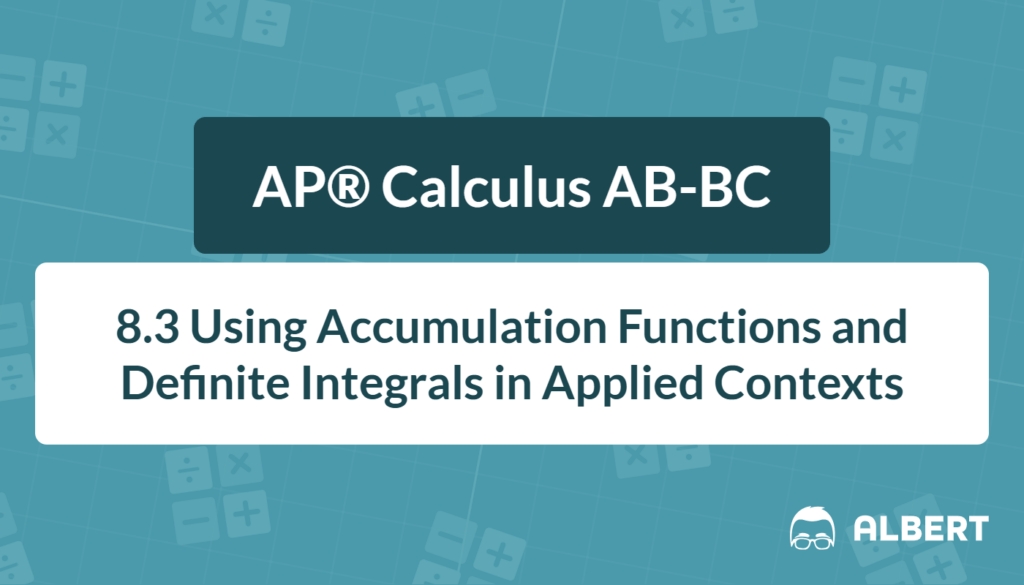Net change seems fancy, yet it answers everyday “before vs. after” questions.
- How much did the water level rise?
- How far did the car move?
- How much money did production cost?
In AP® Calculus, the College Board labels these ideas CHA-4.D and CHA-4.E. By the end, you will
- Understand the plain-English meaning of net change.
- Use accumulation functions and the net change formula.
- Apply the skill in physics, economics, and biology.
You will encounter terms and phrases such as “8.3 using accumulation functions and definite integrals in applied contexts,” “net change formula,” and “how to find net change”.
What We Review
Net Change in Plain English
Net change = ending amount − starting amount.
Therefore, it measures the overall gain or loss, not every wiggle in between.
When a rate is known, net change accumulates that rate over time. Imagine filling a bathtub:
- Faucet pours at different gallons per minute.
- The running total of water rises slowly, then quickly.
- Integrating the rate graph collects all those little additions into one final answer.
Thus, integration is the bookkeeping tool that turns rates into amounts.
Accumulation Functions: Integrals That Store Information
What Is an Accumulation Function?
An accumulation function, usually written F(t)=\displaystyle\int_{a}^{t} r(x)dx, stores the running total of a rate r(x) starting at time a. Each new t gives a new area under the rate curve.
Notation and Units
- Integrand r(x): units of “stuff per time.”
- Differential dx: tiny slice of time.
- Result F(t): units of “stuff.”
Example #1: Water Flow
A hose pumps water at the rate r(t)=5t\text{ gal/min}, 0 ≤ t ≤ 4 min.
Build the accumulation function and interpret F(4).
Solution Steps
- Set up:
- F(t)=\displaystyle\int_{0}^{t} 5xdx
- Integrate:
- F(t)=\left.\dfrac{5x^{2}}{2}\right|_{0}^{t}= \dfrac{5t^{2}}{2}
- Evaluate at 4:
- F(4)=\dfrac{5(4)^{2}}{2}= \dfrac{5\cdot16}{2}=40\text{ gal}
Therefore, 40 gallons enter the tank over the first four minutes.
The Net Change Formula
Statement
\displaystyle\int_{a}^{b} f^{\prime}(x)dx = f(b)-f(a)This net change formula links the integral of a derivative to the overall change in the original function.
Finding Net Change from a Derivative Graph
- Shade areas between the graph of f^{\prime}(x) and the x-axis from a to b.
- Treat area below the axis as negative.
- Add signed areas to obtain net change.
Example #2: Velocity → Displacement
A skateboard’s velocity (m/s) is modeled by the piecewise line below.
Segment 1: +2 m/s for 3 s, Segment 2: −1 m/s for 2 s.
Solution
- Break into rectangles.
- Net area:
- \text{Area}_{1}=2\cdot3=6\text{ m} (positive)
- \text{Area}_{2}=-1\cdot2=-2\text{ m} (negative)
- Net change in position: 6+(-2)=4\text{ m}.
Therefore, the rider ends 4 m ahead of the start.
Applied Contexts: Turning Rates into Outcomes
Real-world rates beg to be integrated.
Physics: Acceleration → Velocity
Given a(t), integrate to find v(t), then add initial velocity.
Economics: Marginal Cost → Total Cost
Marginal cost C^{\prime}(q) per unit accumulates into total cost C(q).
Biology: Growth Rate → Population
Population growth rate P^{\prime}(t) integrated provides population change.
Example #3: Marginal Cost
A firm’s marginal cost is C^{\prime}(q)=0.04q+5\text{ dollars/unit}, where q ranges from 0 to 50 units. The fixed cost is $800. Find total cost of producing 50 units.
Solution
- Set up total variable cost: \displaystyle\int_{0}^{50}(0.04q+5)dq
- Integrate:
- =\left.0.02q^{2}+5q\right|_{0}^{50}=0.02(2500)+250=50+250=300
- Add fixed cost:
- C(50)=800+300=\$1100
Therefore, producing 50 units costs $1,100.
Graphing & Visual Cues
Reading signed area quickly speeds up test-day decisions.
- Positive area raises the total; negative area lowers it.
- A change of sign in the rate function often signals a peak or valley in the accumulated amount.
- Total change counts every bit of area as positive, while net change uses signs.
Micro-Sketch: Picture a wavy velocity curve crossing the axis twice. Even though upward lobes add distance both times, a downward lobe subtracts. The shaded difference equals where the object ends up.
How to Find Net Change: A Five-Step Checklist
- Identify the rate function and the interval [a,b].
- Confirm the units; ensure they match the question.
- Set up the definite integral \displaystyle\int_{a}^{b} r(t)dt.
- Evaluate analytically, or use technology if messy.
- State the answer clearly with units and context.
Follow these steps and the phrase “how to find net change” becomes routine.
Quick Reference Chart – Vocabulary & Definitions
| Term | Meaning |
| Net change | f(b)-f(a); overall gain or loss |
| Accumulation function | F(t)=\displaystyle\int_{a}^{t} r(x)dx |
| Definite integral | Signed area under a curve |
| Signed area | Positive above x-axis, negative below |
| Total change | Area counted as positive only |
| Net change formula | \int_{a}^{b} f^{\prime}(x)dx=f(b)-f(a) |
Conclusion – Big Ideas to Remember
- CHA-4.D.1: Accumulation functions convert rates into totals.
- CHA-4.D.2: The net change formula connects derivatives, integrals, and differences.
- CHA-4.E.1: Applied contexts (physics, economics, biology) rely on integration to predict outcomes.
In short, “what is net change?” Simply integrate the rate over the interval. Therefore, keep practicing with diverse graphs and story problems; mastery will come, step by step.
Sharpen Your Skills for AP® Calculus AB-BC
Are you preparing for the AP® Calculus exam? We’ve got you covered! Try our review articles designed to help you confidently tackle real-world math problems. You’ll find everything you need to succeed, from quick tips to detailed strategies. Start exploring now!
- 8.2 Connecting Position, Velocity, and Acceleration of Functions Using Integrals
- 8.4 Finding the Area Between Curves Expressed as Functions of x
Need help preparing for your AP® Calculus AB-BC exam?
Albert has hundreds of AP® Calculus AB-BC practice questions, free responses, and an AP® Calculus AB-BC practice test to try out.








